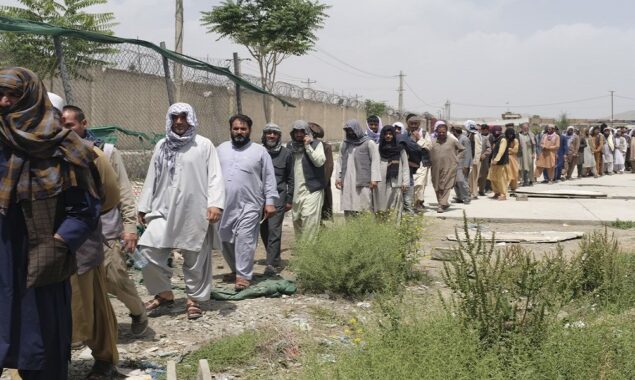
food crisis strikes, Afghanistan’s new poor line up for relief.
In the heat of the mid-morning sun, two lengthy queues of men and women wind around a World Food Programme (WFP) charity distribution facility in Kabul, Afghanistan’s capital.
Many of those seeking assistance in Khwaja Rawash, a middle-class area near Kabul International Airport, are Afghanistan’s new poor. They used to have good careers, but now they rely on international assistance to get by. The WFP will provide them with 3,800 Afghanis (about $40) to see them through the month.
According to Khalid Ahmadzai, a WFP coordinating partner at the location, the situation in this district is calmer than it was on the first day of handouts earlier this month. On May 11, people climbed over the walls to gain access. On the first day, the WFP claims to have assisted 3,000 homes in that district, with each household including an average of seven people.
Around 700 people waited for up to two hours last Sunday before their IDs were checked and money was handed over.
At the food distribution site, armed Taliban members who once stormed Afghanistan’s capital now provide security.
The economic disaster in Afghanistan has been looming for years, the outcome of poverty, conflict, and drought. However, after the Taliban took power in August 2021, the United States and its allies froze $7 billion in the country’s foreign deposits and stopped off international funding. The decision damaged an economy that was already highly reliant on handouts.
Read More News On
Catch all the International News, Breaking News Event and Latest News Updates on The BOL News
Download The BOL News App to get the Daily News Update & Follow us on Google News.




